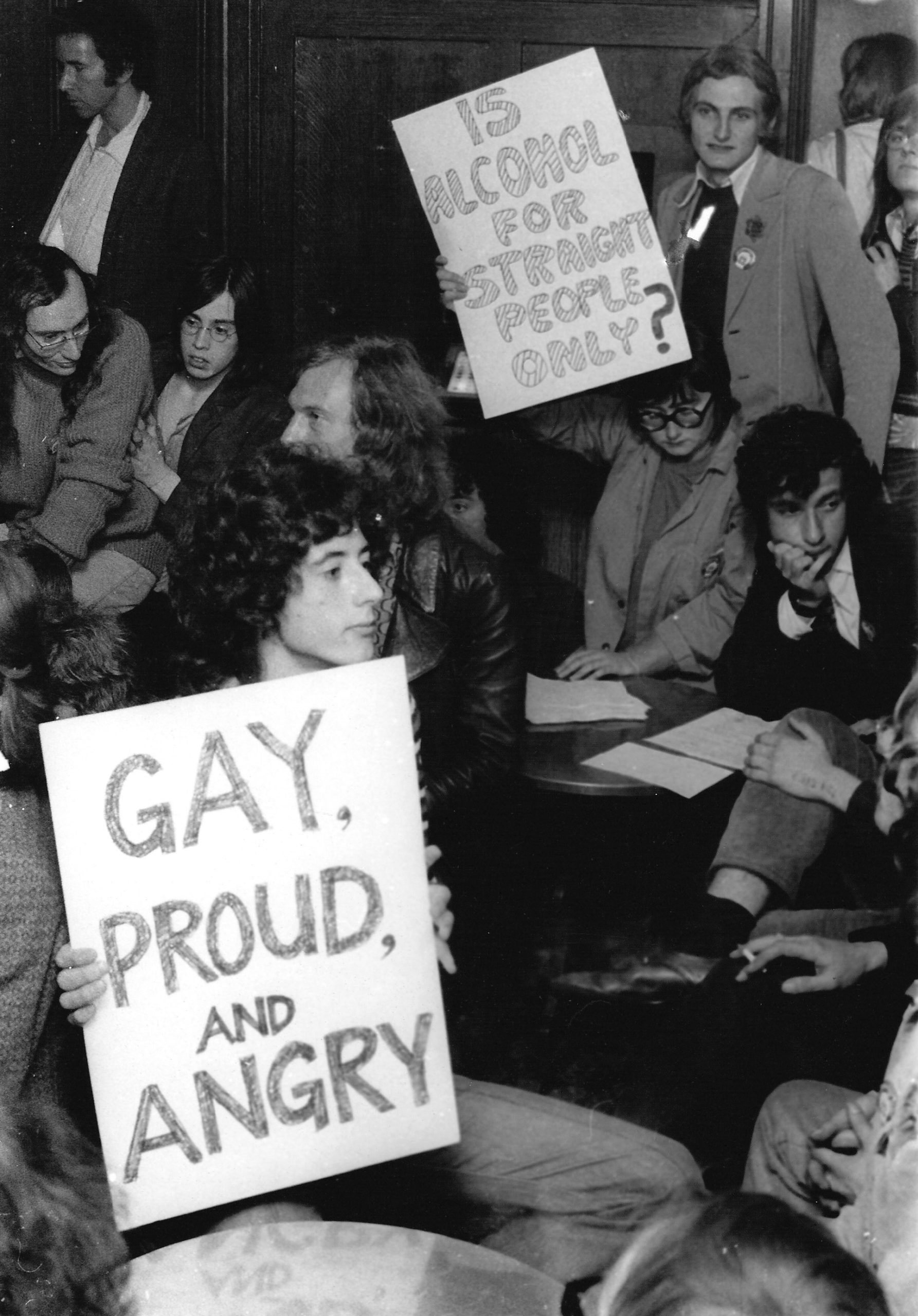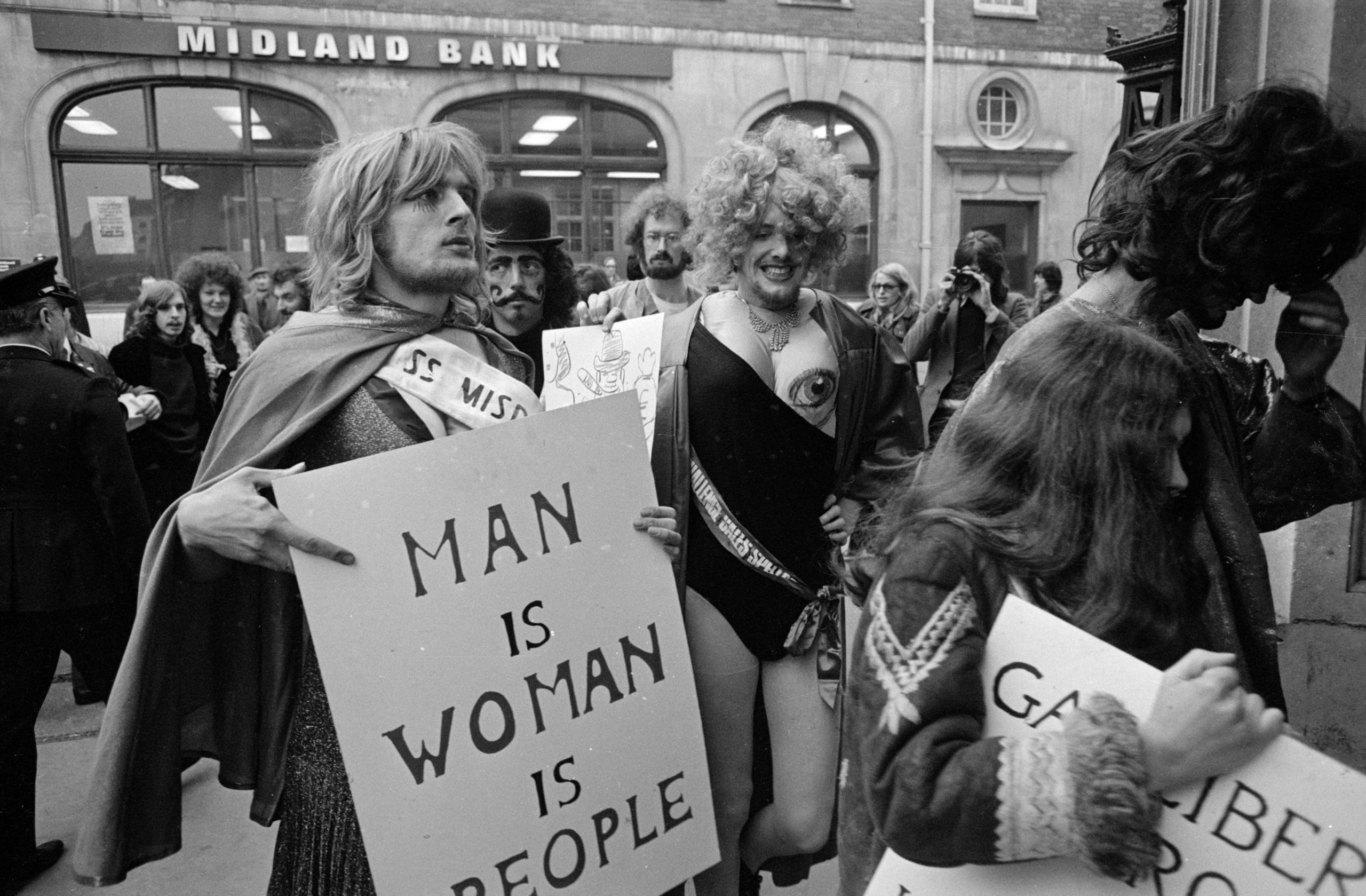Members of the Gay Liberation Front protesting outside Bow Street Magistrates Court (Central Press/Getty)
The erasure of trans people from history is sadly nothing new, so it’s hardly surprising that the fight for trans liberation in the UK is far older than many realise.
The crucible for modern-day LGBT+ rights was, of course, the Stonewall riots of 1969. The demonstrations sent ripples across the world, sparking trailblazing LGBT+ movements from Boston to Berlin – and in Britain, we had the Gay Liberation Front.
It began in 1970 as 19 people in a basement of the London School of Economics. Within weeks it snowballed into meetings attended by hundreds more, becoming a watershed moment in British queer history.
The phrase “LGBT+” hadn’t been coined yet, but that doesn’t mean transgender people weren’t there. As founding member Peter Tatchell explains, trans rights were central to the group’s ethos.
“In the GLF era, the word transgender, with its current meaning, barely existed. It was little known and rarely used,” he told PinkNews. “Back in those early days, gay was, for most of us, an umbrella word for all lesbian, gay, bisexual and trans people.
“GLF challenged gender norms and embraced all gender non-conformists. Trans people shared a defiance of gender rules and expectations alongside LGBs – that gave us a common interest in working together for our mutual emancipation.”

Nowadays it’s a common tactic of anti-trans activists to paint transgender people as something of a modern phenomena, claiming that their involvement in the gay rights movement is a “fiction” inserted into historical narratives.
Nothing could be further from the truth, Peter Tatchell says.
“Gay Liberation Front members supported the trans fight, including protesting at a café near Piccadilly Circus that refused to serve trans women,” he said. “We saw trans rights as part of our struggle.”
He can recall several early issues of the GLF newspaper covering the stories of trans women, who were widely accepted as part of the “diverse spectrum” of the GLF community and movement.
“Many of us in GLF argued that sexual orientation, gender roles and gender identity are all interlinked,” Tatchell continued. “They are part of a matrix of sexual and gender subversion that challenges orthodox social expectations of what it is to be male and female.
“This common thread is why GLF was allied to women’s liberation, and supportive of transgender and bisexual liberation.”

While we now have a range of expression to describe the spectrum of gender and sexuality, 50 years ago many of these ideas were still in their infancy and the language we use today simply didn’t exist.
That meant it was easy for some trans and gender non-conforming people to slip under the radar, but it’s a mistake to assume they weren’t part of the fight.
Like the gay community, trans people were viewed as “gender rebels” who contradicted the same heterosexist norms LGB people did – and their causes were united from the start.
“The right to be different is a fundamental human right for LGBs and Ts,” Tatchell stated.
“The idea that people should be expected to adhere to heterosexual supremacist gender-normative expectations is demeaning and insulting for LGBs and for Ts. We share a mutual interest in working together for both sexual orientation and gender/gender identity liberation.”
To disassociate the LGB from the T, he argues, is therefore “mistaken and impossible”.
